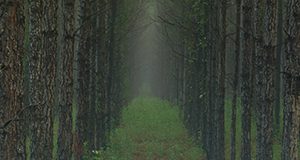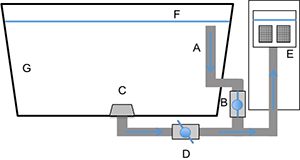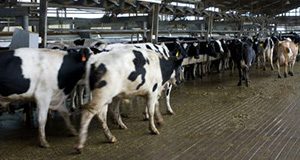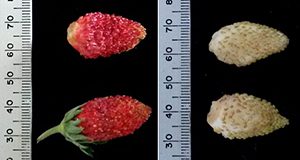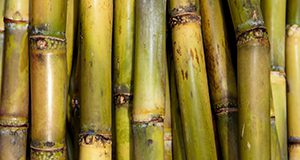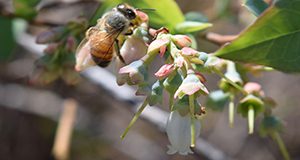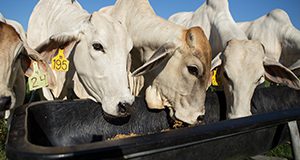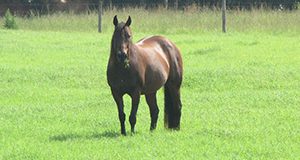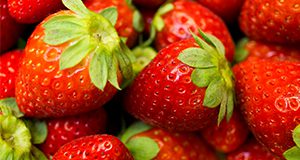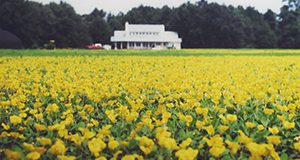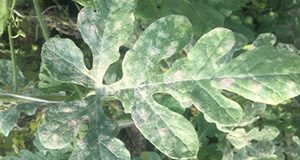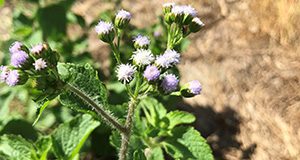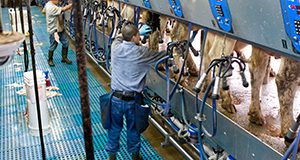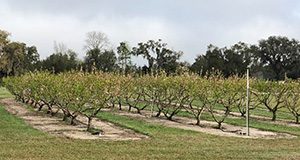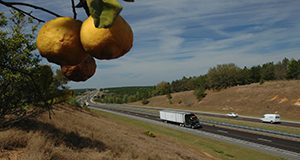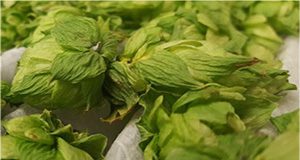Citrus canker is a non-systemic bacterial disease that affects citrus trees in both the citrus nursery and in commercial plantings. This poster is designed to assist citrus nursery workers in the identification of citrus canker. This one-page document was written by Jamie Burrow, Megan Dewdney, Ajia Paolillo, and Tim Riley and published by the UF/IFAS Plant Pathology Department.
http://edis.ifas.ufl.edu/pp346
Category: Agriculture
Economic Contributions of the Forest Industry and Forest-based Recreation in Florida in 2016
The state of Florida is half woods, with 26,807 square miles of forestland. Our extensive natural and planted pine and hardwood forests are used for production of a wide variety of wood building materials, consumer paper and packaging products, chemicals, and renewable biomass fuels. In addition to industrial forest-related activity, public forestlands in Florida support a variety of recreational activities, attract a significant number of recreational visitors, and provide many non-marketed environmental or ecosystem services. This 4-page fact sheet written by Christa Dean Court, Alan W Hodges, and Mohammad Rahmani and published by the UF/IFAS Food and Resource Economics Department describes a study that analyzed the economic contributions of the forest industry and forest-based recreation activities to the state of Florida in 2016.
http://edis.ifas.ufl.edu/fe1051
Design and Operation of Egg Collectors for Pelagic Spawning Marine Fishes
As aquaculture production techniques streamline, interest in captive breeding for marine fish species increases. The food, ornamental, and bait industries all benefit from expanding the development of aquaculture techniques for desirable marine fish species. A significant limitation in developing aquaculture protocols for marine fish species is an adequate understanding of viable egg production and larval development. The first step in that process is to efficiently collect fertilized embryos, usually referred to as eggs, for examination and further development. This 6-page fact sheet written by Cortney Ohs, John Marcellus, Eric Cassiano, and Jason Broach and published by the UF/IFAS Program in Fisheries and Aquatic Sciences of the School of Forest Resources and Conservation includes directions for construction and operation of two types of pelagic egg collectors: pre-filter and floating airlift.
http://edis.ifas.ufl.edu/fa211
Economic Selection Indices: The Best Tool for Dairy Cattle Selection
An economic selection index combines multiple traits into a single value, facilitating the identification of the best animals. This new 3-page document discusses economic selection indices, their changes in the US, and a 2018 update. Written by Francisco Peñagaricano, and published by the UF/IFAS Department of Animal Sciences, March 2019.
http://edis.ifas.ufl.edu/an353
Sample Productivity and Cost Estimates of Producing Longan (Dimocarpus longan Lour.) in South Florida
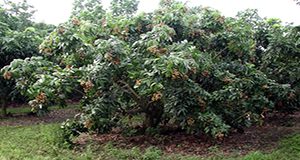
Interest is growing in minor tropical fruit crops. This 6-page publication written by Fredy H. Ballen, Edward A. Evans, Aditya Singh, and Jonathan H. Crane and published by the UF/IFAS Food and Resource Economics Department provides an estimate of the costs and returns associated with the operation of an established longan grove in south Florida. Information presented in this article was obtained through field interviews with growers and industry experts; it reflects a wide variety of production practices in small longan orchards of 1 to 4 acres and should help estimate the financial requirements of operating an established grove.
http://edis.ifas.ufl.edu/fe1049
Alpine Strawberry as a Potential Niche Crop for Florida Growers and Homeowners
Alpine strawberries (Fragaria vesca) produce edible and highly aromatic strawberries known for their excellent eating quality. The berries are fragile and not suitable for long-distance shipping, which inhibits trade on the international market but also provides an opportunity for growers catering to local markets and for homeowners interested in growing this unique and delicious strawberry. This 5-page fact sheet written by Alan Chambers and published by the UF/IFAS Horticultural Sciences Department describes yield and fruit quality for several varieties to guide potential growers. The results of this project are anticipated to benefit growers and homeowners looking to cultivate specialty alpine strawberries.
http://edis.ifas.ufl.edu/hs1326
Elemental Sulfur Recommendations for Sugarcane on Florida Organic Soils
Micronutrient deficiencies can be important limiting factors in alkaline soils, with most micronutrients becoming less available for plant uptake as soil pH increases. This 6-page document is intended primarily for Florida sugarcane growers but may also be useful to researchers and others interested in sugarcane nutrition. It presents revised elemental sulfur recommendations for sugarcane grown on Florida organic soils along with supporting information. Written by J. Mabry McCray, and published by the UF/IFAS Agronomy Department, February 2019.
http://edis.ifas.ufl.edu/ag429
Pollination Best Practices in Southern Highbush Blueberry in Florida
Southern highbush blueberry is the primary blueberry species grown in Florida. It is dependent upon pollinating insects for adequate pollination and fruit. Some Florida growers have reported cases of low fruit set in recent years, in particular on the cultivars Meadowlark and Emerald, which may have been due in part to poor pollination. This 5-page fact sheet written by Rachel E. Mallinger and Douglas A. Phillips and published by the UF/IFAS Department of Entomology and Nematology will discuss blueberry pollinators, some causes of poor pollination, and current best practices to reduce the possibility of poor pollination of southern highbush blueberry.
http://edis.ifas.ufl.edu/in1237
La Ley de Modernizacion para la Seguridad Alimentaria (FSMA): Controles Preventivos para los Alimentos de Animales
La Ley de Modernización de la Seguridad Alimentaria (FSMA) se convirtió en ley en enero de 2011 y se considera la reforma más amplia de las normas de seguridad alimentaria en 70 años. Primero, se establecieron las regulaciones sobre alimentos para el consumo humano luego con la contribución de la industria, la academia, y los consumidores y otras agencias, se modificaron para adaptarse mejor a la producción de alimentos para animales. En Florida, estas nuevas regulaciones se aplican a las instalaciones que fabrican, procesan, empacan o almacenan alimentos o ingredientes para animales. El objetivo principal de estas regulaciones es garantizar alimentos seguros para los animales, las personas que manejan el alimento y las personas que consumen productos derivados de animales. This 4-page document is the Spanish version of The Food Safety Modernization Act (FSMA) Preventive Controls for Animal Food. Written by Francisco Rivera, Chad Carr, and Jason M. Scheffler, and published by the UF/IFAS Department of Animal Sciences, February 2019.
http://edis.ifas.ufl.edu/an352
Potassium Fertilizer Recommendations for Sugarcane on Florida Organic Soils
Potassium is a primary plant nutrient that is required in large amounts by sugarcane. About 74% of the 400,000 acres of Florida sugarcane is grown on organic soils in the Everglades Agricultural Area. Potassium is not a component of organic matter and virgin Histosols contain very low concentrations of K, so release of K through mineralization of organic matter in these soils is not an adequate K source for plant growth. This 7-page document presents revised potassium fertilizer recommendations for sugarcane grown on Florida organic soils along with supporting information. Written by J. Mabry McCray, and published by the UF/IFAS Agronomy Department, February 2019.
http://edis.ifas.ufl.edu/ag428
Pastures and Forage Crops for Horses
Florida's unique climatic characteristics allow for forage production most of the year with a large variety of possible forage choices. Independent of the size of the operation and number of horses, good forage planning can help reduce feeding costs, environmental impacts, and nutritional disorders caused by high-concentrate feeding. With the exception of high-performance animals, horses can meet most of their nutritional needs from pasture. However, achieving this requires careful planning and implementation of a forage production and utilization program. This 9-page document discusses intake and nutrient requirements, pasture planning, forage species, and pasture management. Written by M. Wallau, E. L. Johnson, J. Vendramini, C. Wickens, and C. Bainum, and published by the UF/IFAS Agronomy Department, revised January 2019.
http://edis.ifas.ufl.edu/aa216
Meloidogyne Hapla, the Northern Root-Knot Nematode, in Florida Strawberries and Associated Double-Cropped Vegetables
Northern root-knot nematodes (Meloidogyne hapla) are rather uncommon nematode parasites of strawberries and vegetables in Florida, but when present they are capable of causing significant crop loss. Root-knot nematodes are largely unknown to strawberry growers in Florida and very little is known about their biology and behavior in the state. This 5-page fact sheet written by J. Desaeger and published by the UF/IFAS Department of Entomology and Nematology is intended to educate and provide information on this nematode to researchers, Extension agents, growers, industry representatives, and other stakeholders in the strawberry and vegetable community.
http://edis.ifas.ufl.edu/in1224
Overseeding Rhizoma Perennial Peanut Pasture and Hay Fields during the Cool Season
Hay and livestock producers want to know if they can overseed their rhizoma peanut fields with cool-season forages during rhizoma perennial peanut dormancy. This new 5-page document discusses overseeding for hay and overseeding for grazing. Written by Jose Dubeux, Cheryl Mackowiak, Ann Blount, David Wright, and Luana Dantas, and published by the UF/IFAS Agronomy Department, January 2019.
http://edis.ifas.ufl.edu/ag426
Powdery Mildew on Watermelon in Florida
This 3-page document discusses the symptoms and management of powdery mildew, a problematic fungal disease, on watermelon in Florida. Written by Pamela D. Roberts, Mathews Paret, and Nicholas Dufault and published by the UF/IFAS Plant Pathology Department, January 2019.
http://edis.ifas.ufl.edu/pp342
Biology and Management of Tropical Whiteweed (Ageratum conyzoides) in Citrus Groves
This 3-page document profiles tropical whiteweed, a common weed of agriculture crops, wetlands, roadsides, and pastures in many parts of the world, and discusses how to manage this weed in citrus groves. Written by Ramdas Kanissery, Brent Sellers, and Steve Futch and published by the UF/IFAS Horticultural Sciences Department, January 2019.
http://edis.ifas.ufl.edu/hs1325
The Value of Milk Fat
In the Southeast, milk is priced based on fat and skim milk value, with additional bonuses for somatic cell and bacterial counts. In recent years, butterfat has become more valuable. This 7-page document discusses some of the history behind the changes in milk fat consumption, management factors that influence milk fat content and yield by dairy cattle, and economic implications of changing fat content through the diet in two case scenarios. Written by José E. P. Santos and Albert De Vries, and published by the UF/IFAS Department of Animal Sciences, January 2019.
http://edis.ifas.ufl.edu/an350
Alternative Opportunities for Small Farms: Peach and Nectarine Production Review
This 4-page document discusses peach and nectarine cultivars released by the University of Florida, and how these cultivars increase the potential for expansion of commercial peach and nectarine acreage throughout different areas of Florida. Written by Ali Sarkhosh, Mercy Olmstead, Jeff Williamson, Jose Chaparro, and Juanita Popenoe and published by the UF/IFAS Horticultural Sciences Department, January 2019.
http://edis.ifas.ufl.edu/ac018
FloRun 331 Peanut Variety
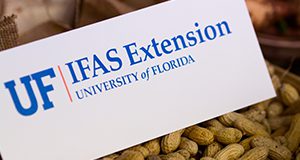
FloRunTM '331' peanut variety was developed by the UF/IFAS North Florida Research and Education Center near Marianna, Florida, and released in 2016. It combines high yield potential with excellent disease tolerance. FloRunTM '331' has a typical runner growth habit with a semi-prominent central stem and medium-green foliage. It has medium runner seed size with high oleic oil chemistry. Learn more about it in this 4-page fact sheet written by Barry L. Tillman and published by the UF/IFAS Agronomy Department.
http://edis.ifas.ufl.edu/ag425
The Electronic Logging Devices Mandate and Hours Of Service for Produce Haulers
Electronic logging devices, or ELDs, became mandatory for commercial motor carriers December 18, 2017. The compliance timeline for the produce industry was delayed with two 90-day waivers. On June 18, 2018, however, ELDs became mandatory for produce haulers as well. The primary purpose behind requiring ELDs was to ensure greater compliance with existing hours of service requirements by motor carriers and their drivers. This 5-page fact sheet written by Fritz Roka, Tara Wade, and Craig Sprouse and published by the UF/IFAS Food and Resource Economics Department reviews HOS rules, clarifies agricultural exceptions to the HOS rules, and offers a preliminary discussion as to how ELDs could affect south Florida produce growers.
edis.ifas.ufl.edu/fe1052
Process of Drying Post-Harvest Hops (Humulus lupulus) for Small-Scale Producers Using a Novel Drying Rig
Fresh horticultural goods often require drying post-harvest to preserve quality and allow for successful long-term storage of plant material. Given the influx of hops cultivation in the state of Florida, this 5-page publication will help Florida hops growers and hobby brewers to understand how to efficiently dry hops prior to storage. Written by Sean Campbell and Brian Pearson and published by the UF/IFAS Environmental Horticulture Department, January 2019.
http://edis.ifas.ufl.edu/ep568

